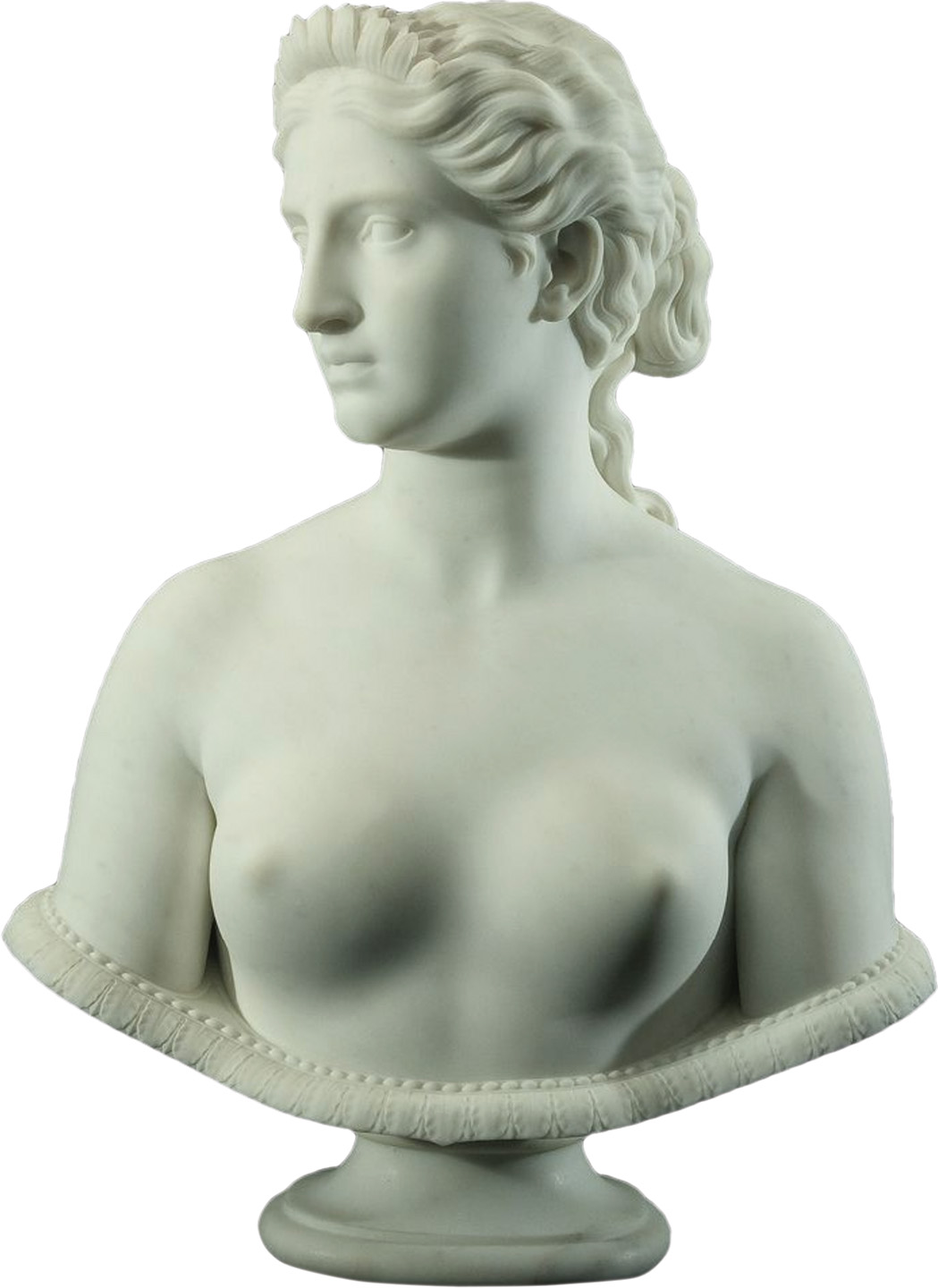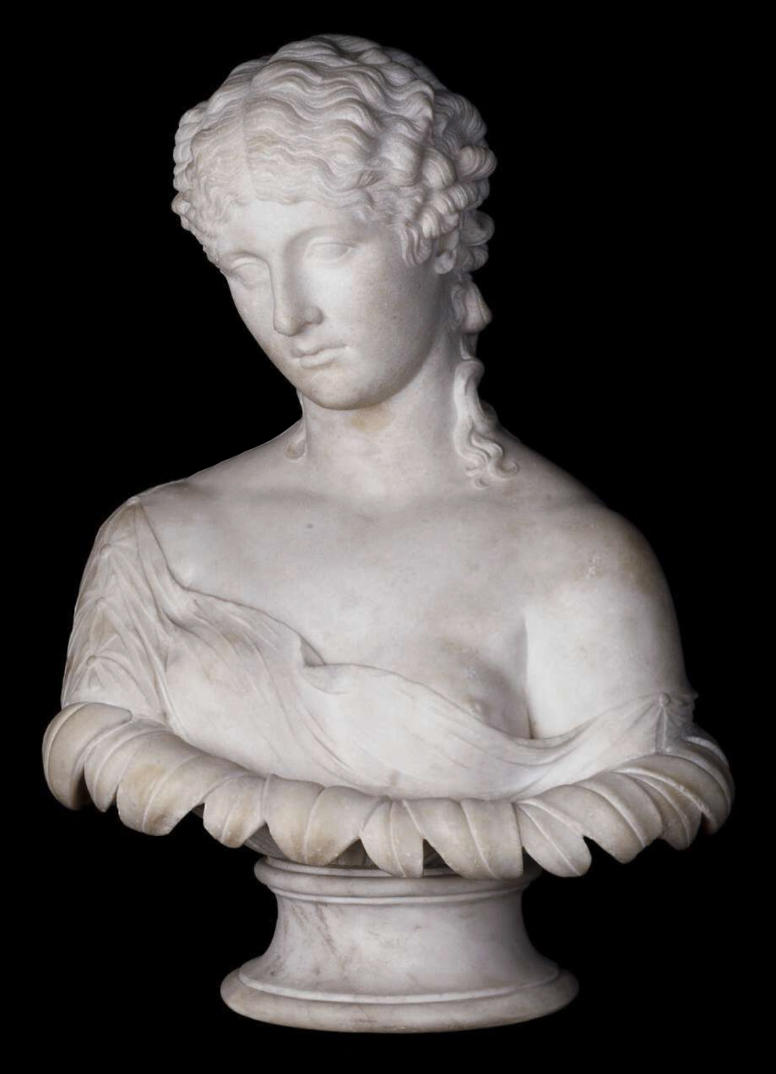Hiram Powers (1805–73)
Clytie, modeled 1865–67
Marble
McMullen Museum of Art, Boston College, Gift of Alexandria & Michael N. Altman P’22, ’24, ’26

Vermont-born Hiram Powers was one of the most influential American sculptors of the neoclassical style. He studied drawing and sculpting with Prussian émigré sculptor Frederick Eckstein at his Academy of Fine Arts in Cincinnati, where the Powers family moved when he was fourteen. A Cincinnati patron funded a trip to Washington, DC, where Powers secured his reputation sculpting busts of many notable Americans including Andrew Jackson. In 1837 Powers relocated his studio to Florence, Italy, where he worked for the rest of his life. With access to quarries at Carrara and Seravezza, Italy became a training ground for a generation of American neoclassical sculptors.
Inspired by a classical Roman bust in the British Museum (see image) that was reworked in the eighteenth century (probably by a dealer) to represent the water nymph Clytie, in 1865 Powers began work on his own version of the subject. He probably knew this famed classical archetype only through the widely circulated engravings and marble and porcelain reproductions like that displayed nearby.

Portrait bust of Clytie/Antonia, Roman (said to have been excavated in Naples), c. 40–50 CE. Marble, British Museum, London.
The British Museum bust shows Clytie, daughter of Oceanus, god of the sea, who was besotted with the sun god, Helios. When Helios betrayed her with another woman, Clytie transformed into a sunflower. Thus, Clytie came to signify steadfast love with sunflower petals enveloping her body. Powers departed from the ancient bust in depicting his Clytie nude, gazing to the right and with a sunflower diadem in her hair. An account by a visitor to Powers’s studio while Powers was modeling Clytie, explains: “We found him working on an extremely beautiful figure of Clytia [sic], with a sunflower on her forehead—emblematic of her fate, in consequence of her jealousy of Leucothea. The face was so lovely, that I felt curious to know what country had furnished the model. ‘Many,’ was the reply; ‘for, like the bee, extracting sweets from several flowers, I cull beauty from many faces; and here you see is the result. It was a face, lifeless indeed, but wonderfully lifelike—And yet so lovely, that if Mirth could flush / Its rose of whiteness with the brightest blush, / [Your] heart would wish away that ruder glow.’”1
The lines of poetry Powers recited are from Lord Byron’s “Sonnet—to Genevra.”
The bust of Clytie forms an important part of Powers’s oeuvre known as “ideal” sculptures referencing mythological, allegorical, historical, or biblical themes.
1. Charles Richard Weld, Florence: The New Capital of Italy (London: Longmans, Green and Co., 1867), 222–23.

Diana Larsen
Assistant Director, McMullen Museum